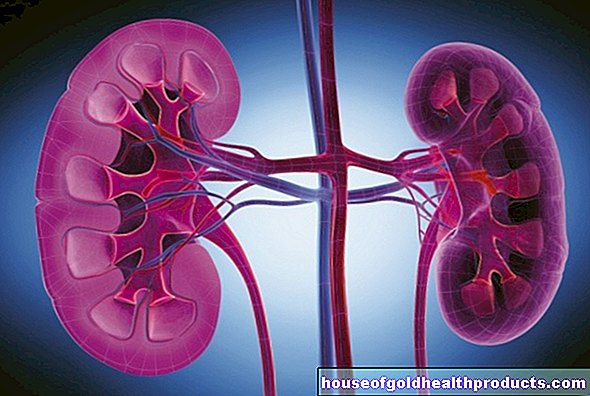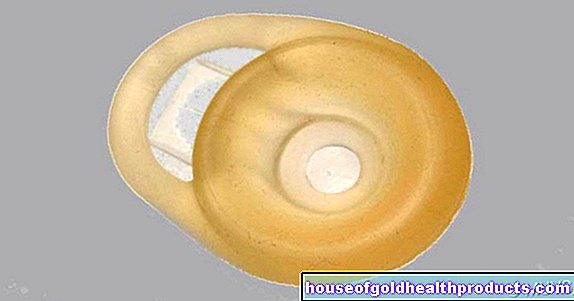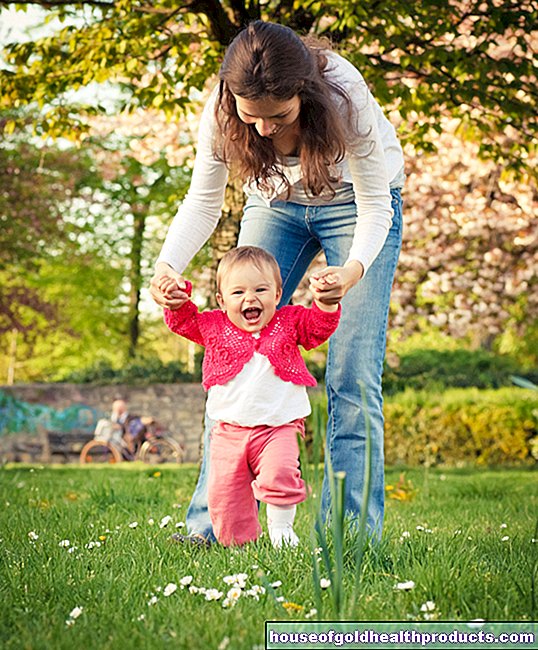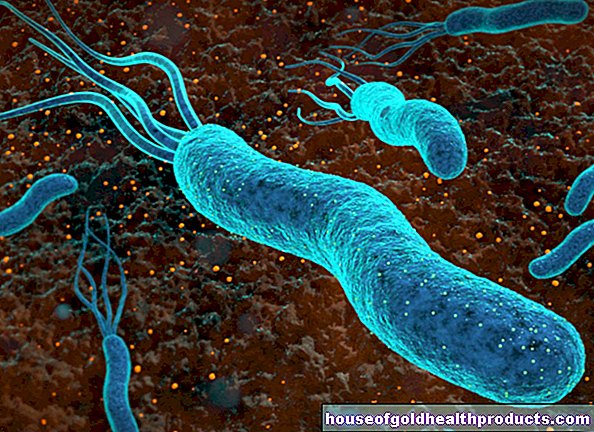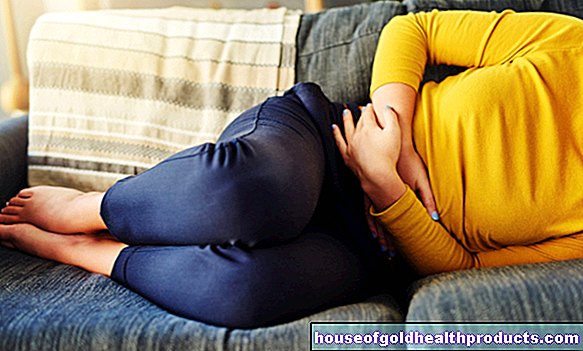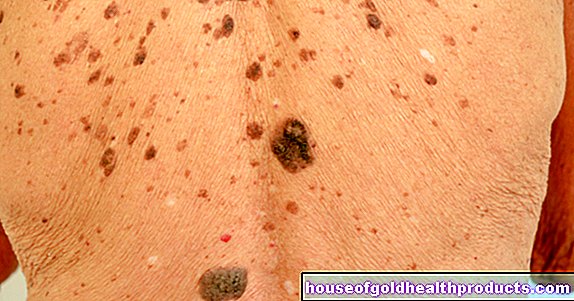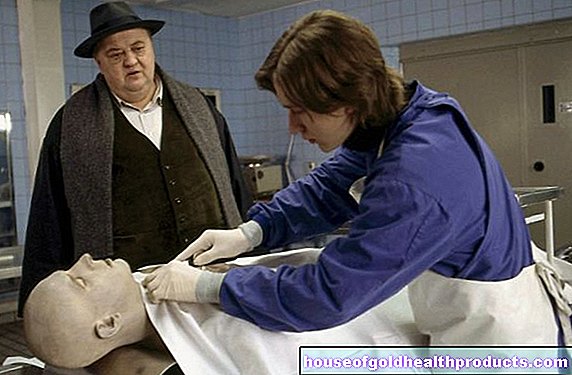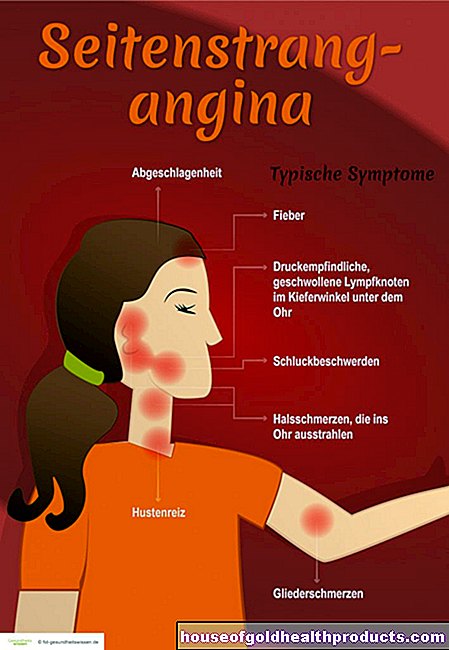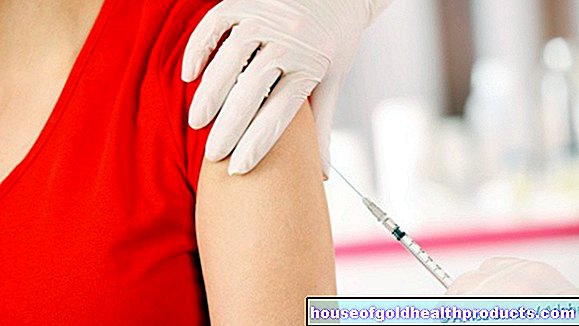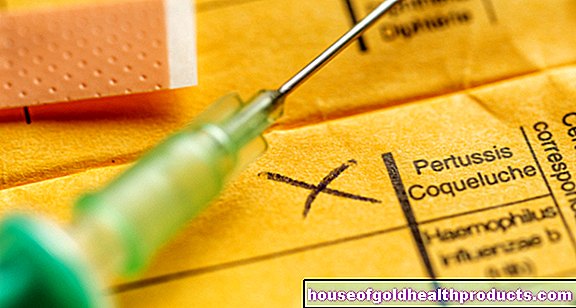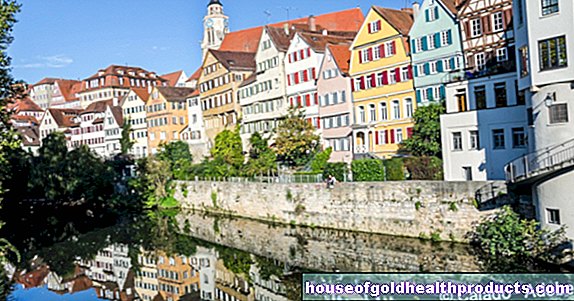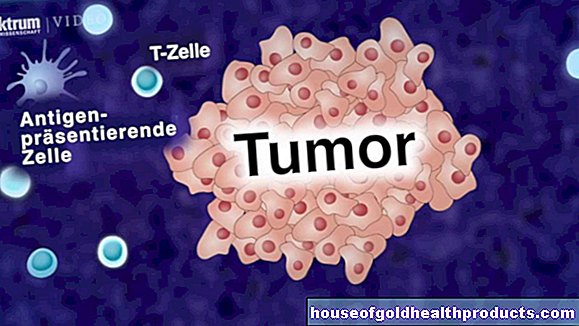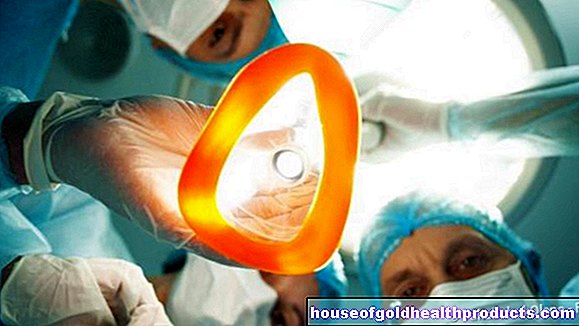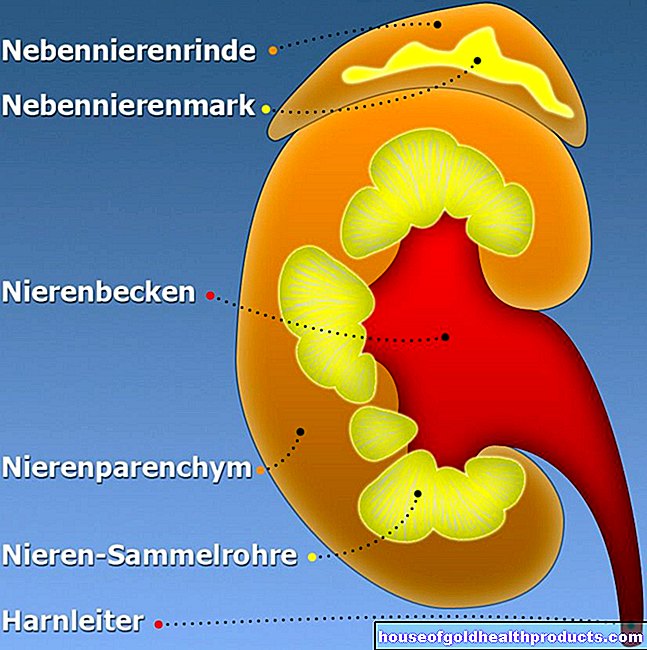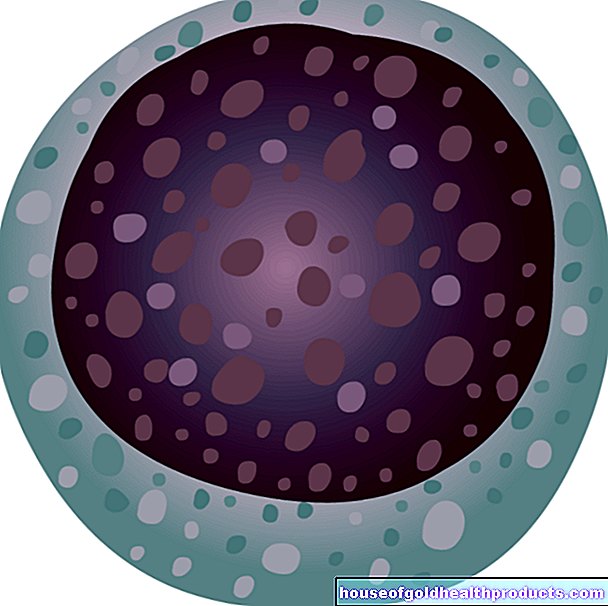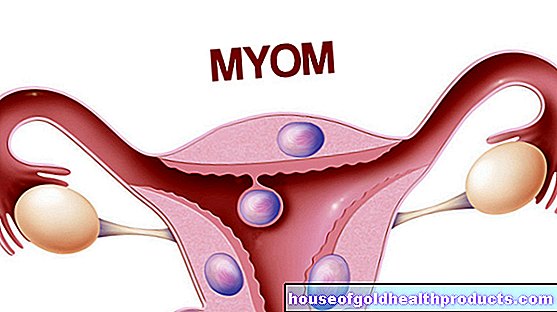Clubfoot
Dr. med. Julia Schwarz is a freelance writer in the medical department.
More about the experts All content is checked by medical journalists.The clubfoot (Pes equinovarus) is a misalignment of the foot. The soles of the feet look inwards. The misalignment is caused by insufficiently functioning foot and calf muscles. Mostly this is a congenital impairment. Boys are affected twice as often as girls. Good results can be achieved with immediate treatment after birth. Read more about clubfoot here.
ICD codes for this disease: ICD codes are internationally recognized codes for medical diagnoses. They can be found, for example, in doctor's letters or on certificates of incapacity for work. M21Q66
Clubfoot: Description
Clubfoot is a misalignment of the foot caused by a lack of muscle strength. The foot is turned inwards (supination position). The soles of the feet then point inwards / upwards, and the lower leg muscles are deformed.
Mostly this clinical picture is congenital. If certain muscle groups cannot develop fully in the child during pregnancy, clubfoot develops. However, baby feet are still very flexible and flexible, which is why there is a good chance of recovery if treated immediately.
In some cases, clubfoot is also caused by a nerve defect (for example, after an injury). The nervous innervation of the muscles may have been severed and is then missing. The longer the muscles are not used, the more they regress and clubfoot can result.
There are various misalignments of the foot that can occur with clubfoot:
Misalignments of the foot
Sickle foot (Pes adductus or also called splay foot): Read more about this in the article Sickle foot.
Equinus (Pes equinus): Read more about this in the article Equinus.
Hollow foot (Pes cavus): Read more about this in the article hollow foot.
Pes varus (an inward bend of the foot in the ankle)
Clubfoot: Symptoms
The symptoms are clearly visible in both congenital and acquired clubfoot. The person concerned walks on the outer edge of the foot or, in particularly severe cases, even on the back of the foot (as far as possible). One or both feet can be affected. Usually the clubfoot has four different characteristics:
- Bony malformations (mostly affecting the heel bone)
- Misalignments or dislocations in the joints (the ankle is often affected)
- Weakened or shortened muscles (for example the calf muscles)
- Limitations in the capsule-ligament apparatus (when tendons or ligaments are shortened or damaged)
Also typical is the so-called “clubfoot calf”, which is caused by a curvature of the calf muscles and a shortening of the Achilles tendon. It is important for the success of the therapy that the symptoms are treated as quickly as possible.
Clubfoot: causes and risk factors
A distinction is made between a congenital and an acquired clubfoot. There are now some explanations for the acquired clubfoot. For the congenital variant, however, there is still no generally valid explanation.
Congenital clubfoot: causes
- Clubfoot can occur if the unborn child lies so twisted in the uterus that the growth of the legs is restricted.
- A long-term lack of amniotic fluid is also a possible cause.
- Early childhood brain damage caused by a lack of oxygen can lead to deformities such as clubfoot.
Acquired clubfoot: causes
- Neurological diseases in which the muscle supply is impaired.
- Poliomyelitis often led to clubfoot in the 1950s, but is no longer as common today thanks to the introduction of vaccinations.
- A congenital "open back" (neural tube defect) can result in an incorrect supply of the lower leg muscles and thus lead to clubfoot.
- Injuries that cut the nerve of the lower leg muscles cause an undersupply of the muscle. This causes the muscles to shrink and a clubfoot develops.
- A circulatory disorder of the calf muscle artery (arteria tibialis posterior) also leads to an insufficient supply of the muscle and thus possibly to a clubfoot.
Clubfoot: examinations and diagnosis
A clubfoot can usually be seen with the naked eye. To secure the visual diagnosis, the doctor often takes an X-ray. This allows the extent of the malformation to be identified more precisely.
Recently, ultrasound has been used more and more in clubfoot diagnostics. It is a quick and inexpensive way to illustrate the supply of a muscle region.
Another examination method is dynamic foot pressure measurement (pedography). The pressure load on the foot is measured while standing steadily. This method is also used in the manufacture of orthopedic footwear.
In order to get to the bottom of the causes of clubfoot disease, an extensive diagnosis should be carried out in any case, as the cause is also indicative for treatment.
Clubfoot: Treatment
Congenital clubfoot
For congenital clubfoot, treatment should begin immediately after birth. The body tissue is still very flexible after the birth, so that the best results can be achieved. Before operating on the clubfoot, however, there are numerous less invasive (conservative) treatment options.
Newborns benefit most from plaster therapy or taping. The children wear a plaster cast for a longer period of time, which brings their feet into the correct position. This measure may seem more frightening to parents than it ultimately is. The cartilage and bone tissue is still very flexible and the child usually does not experience any pain. The padded cast should be changed and reapplied every few days, as this process is carried out in stages.
During taping, the joints are first mobilized daily through physiotherapy. Then the affected foot is fixed with the help of special adhesive tapes. The corrections achieved in this way must then be retained. There are also special splints, orthopedic shoes or insoles that have to be worn during the growth phase. Regular checks are also important.
Sometimes this non-invasive clubfoot treatment does not have the desired effect, or clubfoot recurs over time. In these cases, surgical therapy should be considered to lengthen the Achilles tendon. In the meantime, however, there are only ten to 15 percent of conservatively treated children who still need an operation.
Acquired clubfoot
In the case of an acquired clubfoot, conservative therapy is rarely successful. Specially made splints or shoes can help with nervous causes. However, the more pronounced the clubfoot, the more likely an operation must be considered.
There are different surgical techniques that are used depending on the severity and severity. Accompanying physiotherapy is very useful for all procedures in order to finally eliminate the clubfoot. It helps stretch muscles and maintain correct posture.
Clubfoot: disease course and prognosis
If the clubfoot is not adequately treated, the malformations will worsen over time. At some point the affected foot stiffens and conservative healing is then difficult. In addition, a pronounced, stiff clubfoot causes pain when put under stress. With immediate and regular treatment, however, good results can usually be achieved.
Tags: teeth hair news
